The Icelandic Sagas
The Icelandic sagas, also known as Sagas of the Icelanders, were written in the 13th and 14th century. These proses are narratives based on historical events that took place in the 9th, 10th and 11th century. Exploring Iceland in relation with these sagas is both interesting and fun.
The Icelandic Sagas, despite being written in the late middle ages, are still quite popular in Iceland. They get published again and again, in many different forms, and the narratives have been retold countless of times. And no wonder. There are so many sayings and quotes that are still alive and actively used in Icelandic. Some are hard to understand for the modern Icelandic speaker without having the context that the sagas provide. Many of these were at first passed down from generation to generation via oral tradition. In the 12th and 13th century however the sagas were written down and stored in the manuscripts.
The sagas are based on historical events that took place in the so-called Saga Age, which is the 9th, 10th and 11th century, or during the reign of the Icelandic Commonwealth. These focus on family history, struggles and conflicts that arose during the settlement of Iceland, the first centuries after the settlement and when the Christianity took over the old Scandinavian paganism, or as the Vikings called it, “hinn forni sidr” (e. the old way).
What I find that makes the Icelandic sagas most interesting is the fact that often are the conflicts between people that are close. These are stories about brothers, siblings, neighbors and brethren fighting, very often with deadly consequences. And travelling in Iceland these stories come alive. Farms, valleys, rivers and fjords all play part in the sagas, just as much as the characters themselves. These aren’t stories about two kings in war with each other, each living in their own castle, miles apart. These are narratives about farmers that live only few miles apart, people like you and me.
There are over 40 sagas and a few more that have become lost over time, e.g. the saga of Gaukur Thrandilsson. Those that have been preserved can be found in old manuscripts, which you can see in Safnahus in Reykjavik. Many of the sagas have been translated and you can find English translations in many book stores in Iceland.
The West
There are many sagas that take place in West Iceland, and some of the most famous ones. Borgarfjordur area seems to have been settled early and judging by the sagas, many people lived there.
Saga of Egill Skallagrimsson
When in Borgarfjordur area, you might want to check out the Saga of Egill Skallagrimsson. Egill was a warrior-poet that lived in Borgarnes, in the farm Borg. Egill showed at an early age that he had some serious anger issues. His temperament he probably inherited from his father and grandfather. But, he was also intelligent and a great poet. He went abroad with his brother Thorolf Skallagrimsson to become a Viking. His brother died while fighting in England. Egill returned to Iceland to become a farmer and later died of old age.
Egill was a remarkable character, hardy and merciless, eager to prove his worth in battle and one that must’ve been hard to be around with because of his temper and sharp tongue. He had a voracious appetite, especially for mead, and venerated Odinn and Thor as his father did. Still, through his poetry he gives us a glimpse of his softer and more sensitive side. After losing two of his sons he wrote a poem called Sonatorrek (e. Loss of a Son), in which you fill find an unusual personal expression of the Norse paganism and a deep, palpable sorrow.
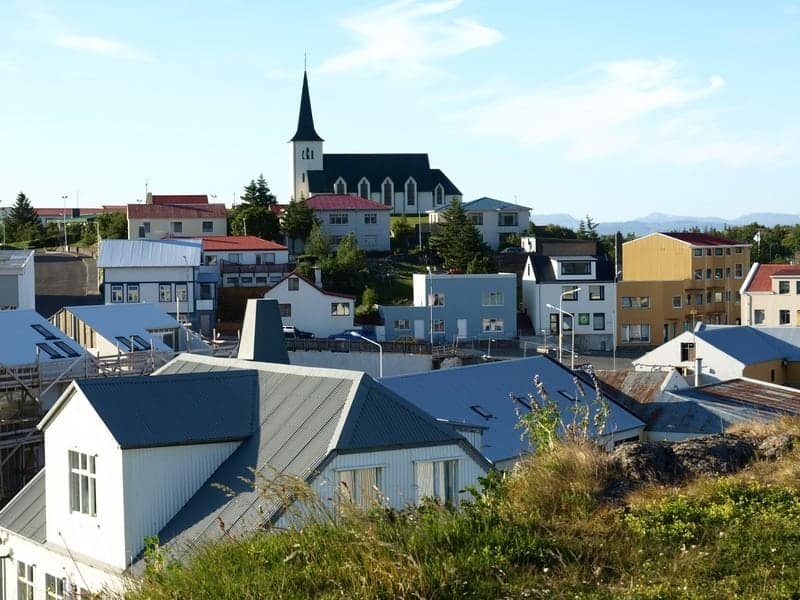
Notable places in the Saga of Egill
While you are in Borgarnes, make sure you check out the Settlement center. The museum has some great information on Egill Skallagrimsson. Borg farm is also close to Borgarnes. Borg was the farmstead that Skallagrimur Kveld-Ulfsson, Egill’s father, erected after settling in Iceland and where Egill grew up. There you can find a beautiful church and an interesting sculpture by Asmundur Sveinsson, commemorating Egill’s poem, Sonatorrek.
What makes Borg even more interesting is the fact the Snorri Sturluson, who was a descendant to Egill and one of the most prolific writers in the 13th century, also used to live there before moving to Reykholt. There are many scholars that believe that Sturluson was the one who initially wrote the Saga of Egill Skallagrimsson, making Egill’s saga the only saga with a known writer.
Not far from the Settlement Center is Brakarey Island, a small island close to the small peninsula where the town is today. You can reach the island by crossing a short bridge. The straight between the peninsula and the island is called Brakarsund. It is named after a female slave that was tasked with being a nanny to Egill, that gave her life defending young Egill from his father’s anger.
She tried to fend off Skallagrimur after the young boy had done something to anger him, which enraged the man even more. Brak ran from Skallgrimur, but he followed her. She tried to swim over the straight, but Skallagrimur threw a large rock at her and hit her. Brak drowned in the straight.
Eyrbyggja saga
Unlike the saga of Egill Skallagrimsson, Eyrbyggja saga (or the saga of the people of Eyri) is not about a single hero but is centered around two strong chieftains and their long-standing feud. One of these chieftains was Snorri Thorgrimsson, referred to as Snorri godi. Snorri, who was a nephew to Gisli Sursson (see below), is also featured in other sagas, like Laxdaela saga and Brennu-Njals saga (see below).
Eyrbyggja saga takes place for the most parts on the northern part of the Snaefellsnes peninsula. It portrays the different families and individuals living there and the constant political and physical struggles they partook in.
The author seems to favor Snorri godi, though Snorri is not necessarily always an honorable man. As the story goes, many of his foes often felt that his actions were cold-hearted. Still, he was shrewd man with unusual foresight and a great taste for vengeance.
Mixed into the narrative are many legends and much folklore, most notable is the haunting of Froda farm and the murder of the Swedish berserks by Viga-Styrr. What also makes the story very interesting is how women are portrayed. They are prominent and strong-willed characters, who own properties and court their own marriages.
Notable places in Eyrbyggja saga
Only a short drive outside Stykkisholmur is the farm Helgafell and mt. Helgafell (e. Sacred Hill). This was Snorri’s farm for the most part of his life. There you can hike to the top of the mt. Helgafell and enjoy the view of Thorsnes peninsula.
The Berserker lava field is also a must-see. The lava field is one of the most picturesque one in Iceland. You can also pay a visit to Bjarnarhöfn, which offers a good view of the lava field, and there you will find an interesting shark museum.
Finally, driving east along the Snaefellsnes peninsula towards Skogastrond reaches and Budardalur village, you come across Alftafjordur. There’s no longer any farm in Alftafjordur, but Snorri grew up there, after being fostered by Thorbrandr of Alftafjord. The fjord is a serene and beautiful place and a great place for a picnic.
Laxdaela saga
Laxdaela saga, or the Saga of the people of Laxardalur valley, is probably one of the most popular sagas, second only to Brennu-Njals saga. It was written in the 13th century and tells of people that lived in Breidafjordur area in the late 9th century until early 11th century. The narrative focuses mostly on a love triangle between Gudrun Osvifursdottir, Kjartan Olafsson and Bolli Thorleiksson. The two men grew up together and were foster brothers.
Laxdaela saga is the most romantic of all the Sagas, it is poetic and full of pathetic sentiment. The main characters are almost chivalric, as much as Icelanders of that time could be chivalric.
Gudrun Osvifursdottir is also a very interesting character. She marries four times, she leaves the first one after she had made him a shirt with a low-cut neck and then divorces him on the account that he wore women’s clothes. Then she marries another man, Thordur Ingunarson, but after a short marriage he drowns. Next, she marries Bolli, which enrages Kjartan, once he finds out. The two become enemies and Bolli ends up killing Kjartan. Few years later, Bolli is killed in retaliation by Kjartan’s kin. Finally, Gudrun marries for the fourth time, but her husband drowns. In her old age she becomes a nun and an anchorite.
Late in her life her son asks her which of her husbands she had loved the most. At first, she doesn’t answer, but when he presses the point, she simply says: “To him I was worst whom I loved most.” The translation, however, doesn’t do her answer good, since in Icelandic her answer can refer both to a single person and many persons, since þeim (e. him or they) can be both singular or plural. This play with words is something that the writers of the Sagas sometimes did, making it hard for modern translators to fully convey the complete and many layered meaning of the texts.
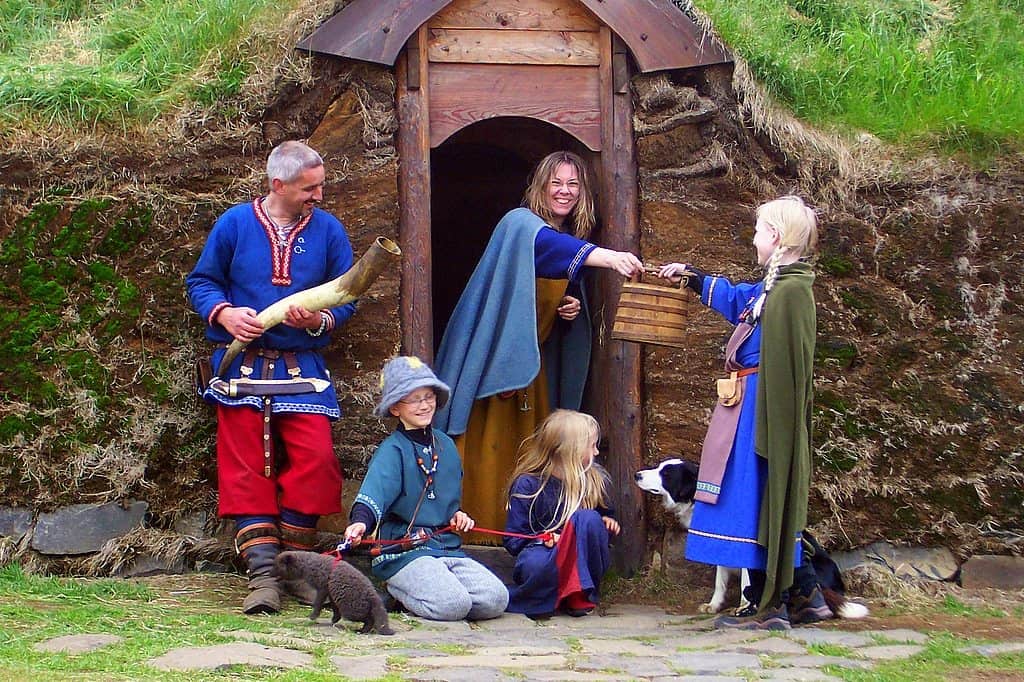
Notable places in Laxdaela
A little outside Budardalur village is a long and fertile valley, called Laxardalur valley. There are many farms there that appear in not only Laxdaela but also in many other sagas, e.g. Brennu-Njals saga (see below), the most notable farmsteads being Hjardarholt and Hoskuldsstadir. Bolli and Kjartan grew up together in Hjardarholt.
As you head north following road 60, you will pass Budardalur village. North of the village is another farmstead, Ljarskogar, where the local chieftain, Gudrun’s father, tried to settle the parties that were fighting over Kjartan’s murder.
Next up is Saelingsdalur valley, where Gudrun lived most of her life. There you will find a hot geothermal pool, called Gudrunarlaug. In Laxdaela there are mentions of a geothermal pool, whether this is the one, we will never know.
Finally, it is worth mentioning that in the next valley, to the west of Saelingsdalur valley, you will find the farm Hvammur. This is the farmstead that one of Iceland’s first settlers, Audur djupuðga (e. Audur the wise) made her farm there and later it became the home of one of the most influential families during the age of the Sturlungs.
Along the road and by many of the places in Laxdaela you can find informational posters and signs.
The Westfjords
The magnificent Westfjords are enigmatic, serene and beautiful. No wonder many settled there, especially since the Westfjords have many things in common with the western part of Norway where many settlers came from, i.e. deep fjords, steep mountains and fertile valleys.
There are a few sagas that take place in the Westfjords, the most notable one being the Saga of Gisli Sursson. Many of the other sagas, Brennu-Njals saga and Grettis Saga to name a few, also have a strong connection to the Westfjords, and many renown characters lived there, characters like Onundur woodenfoot, that lost his foot fighting against Harald the fair-haired at the battle of Hafursfjord. Onundur lived in Kaldbakur in Strandir, the eastern shores of the Westfjords.
Gisla saga Surssonar
Gisli Sursson was a settler in Haukadalur in Dyrafjordur. His blood brother, Vesteinn, was murdered, by whom we do not know. Gisli decides that it must’ve been his brother in law, Thorgrim, and takes vengeance upon him, murdering him in his sleep. Thorgrim was father to Snorri godi, which at that time was mere few winters old. Thorgrim’s family was influential and Gisli was sentenced for the murder.
Gisli manages to stay an outlaw for 13 years, second only to Grettir Asmundsson (see below). He is a quite interesting character. Despite his seemingly obsession with his honor or saemd, he is but a simple farmer. But anytime someone insults, even just slightly, him or his family’s honor he feels a driving need to retaliate. However, Gisli isn’t blood-thirsty, and seems to have deeper connection with some higher powers. He keeps dreaming these two women who tell his fate, perhaps some kind of norns, yet he decided to turn away from the old Norse paganism, though he isn’t a Christian, which make his dream-women all the more interesting.
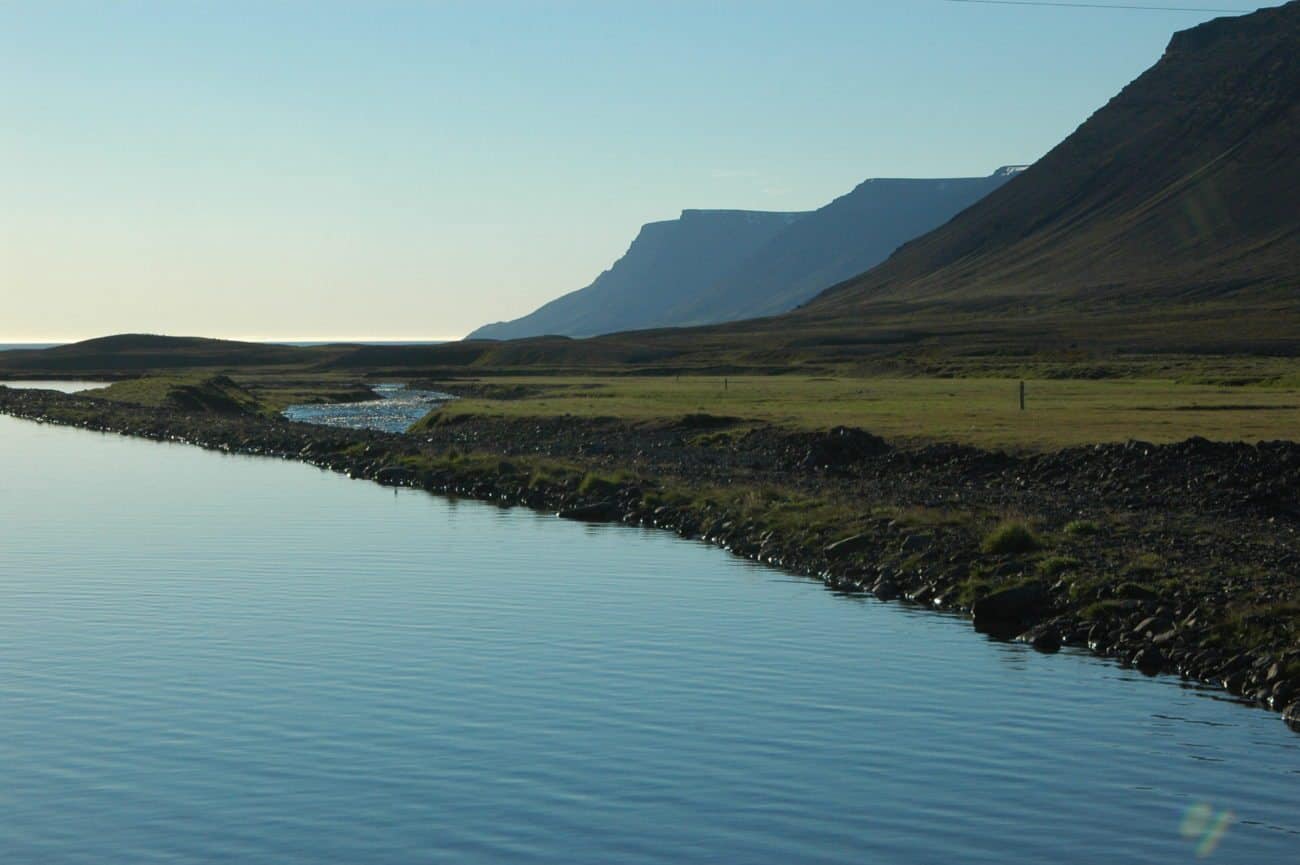
Also, what makes the saga of Gisli interesting, is the role that women play in the narrative, especially Gisli’s sister, Thordis, and his wife, Audur. Both characters are highly intelligent, strong-willed and stand up to men when they need to, fearlessly they use weapons and Audur fights beside her husband in his last battle. In a way, they represent the norns that Gisli keeps dreaming about, since often they control Gisli’s fate, through their action and inaction. Finally, a curse is laid on Gisli early in the saga, one the prevents all men in Iceland to help Gisli in any way. However, the curse doesn’t say anything about women. Perhaps J.R.R. Tolkien knew Gisla saga when he wrote about how no man could harm the Ringwraiths in Lord of the Rings.
It is obvious that the writer of the saga held Gisli in high regard. Gisli seems to have been almost divine or gifted with some super powers. He can grab spears hurled at him and throw them back in a single motion. Gisli outwits and outruns his pursuers time after time. He is a superb craftsman and a master poet. Even in his final stand, he is cut so that his intestine fall out, yet he simply pushes them back in, adjusts his belt, cites a stanza, before jumping off a cliff and cleaving his main adversary in two, dying just as he landed.
Notable places in Gisla Saga
There are many notable places in the Westfjords linked with Gisla Saga. Haukadalur in Dyrafjordur is a small and beautiful valley, where you can still see many of the places mentioned in the saga, like the pond where during winter the people of Haukadalur gathered for games.
Perhaps the most breathtaking place to visit is Geirthjofsfjordur fjord. It is secluded and only reachable either by boat or by hiking. However, once you’re there you can see where Audur, Gisli’s wife, lived while Gisli was an outlaw. He had a secret hide-out not far from her farmstead. Also, on top of the small bluff there, Gisli made his final stand, fighting off 13 attackers.
Fostbraedra saga
Fostbreadra saga or Saga of the Sworn Brothers is perhaps not the most popular saga. It does not have the scope or weight of sagas like Laxdaela or Brennu-Njals saga, nor the depth or as gribbing characters as Hrafnkels saga or Gisla Saga. It has, however, in recent years come to critical attention for the range and details of its portrayals of women.
The main characters of the saga are the sworn brothers Thorgeir and Thormodur in the early 11th century. In way, they are a match made in hell, since the community is slowly changing and leaving behind the characteristics that defined the Viking community.
They, however, follow these characteristics strictly, Thorgeir being insanely brave warrior, capable and blood-thirsty, often killing people for sport. Thormodur is a little more complicated, he is a warrior-poet that keeps getting himself into trouble, mostly because he is a womanizer. The saga contains many poems and stanzas by him, including parts of a lay on his blood brother.
Thorgeir finally gets killed in Iceland after the two separated. Thormodr, who is in Norway at the time, leaves for Greenland. Once there he murders many men, before leaving Greenland. He returned to Norway where he died, after being shot with an arrow.
Notable places in Fostbraedra saga
Though Fostbraedra saga takes mostly place abroad there are a couple of places that are worth noting. First and foremost is the farmstead Laugaból in Laugardalur valley on the western shores of Isafjardardjup fjord, where Bersi, Thormods father, lived. Laugardalur valley is a beautiful small valley, with a pristine lake and small salmon river. The farm is believed to have been on the southern bank of the lake.
Not far from Laugardalur valley is a small cove called Ogursvik, where one of the women that Thormodur befriended lived. Her mother wasn’t all too keen about their friendship and asked her slave to murder Thormod. The slave, Kolbakur, didn’t succeed in his mission, and needed to flee Iceland.
Strandir and Jokulfirdir fjords also appear in Fostbreadra saga. The blood brothers go there to fetch angelica. Strandir is an incredible hiking area and one like no other in Iceland.
The North
North Iceland is fertile and must’ve been alluring in the eyes of the Norse farmers that settled there. You’ll find there long, green valleys, each with rivers filled with salmon and trout. Naturally, there are many sagas that take place in the North.
Two of these sagas are marvelous, Vatnsdaela saga and Grettis saga. They are different, each with its own merits. There are, of course, other sagas that take place in North Iceland, sagas like Ljosvetninga saga and Svarfdaela saga, but these are not as popular as the first two.
Vatnsdaela saga
Vatnsdaela saga or Saga of the People in Vatnsdalur is essentially a family chronicle. It was probably written sometimes after 1250 AC but before 1300 AC. Many scholars believe that the saga was initially written in Thingeyrarklaustur, which once stood where you can find Thingeyrarkirkja church now. The narrative takes place in the lush and fertile valley Vatnsdalur in Hunafloi area in the North-Western part of Iceland.
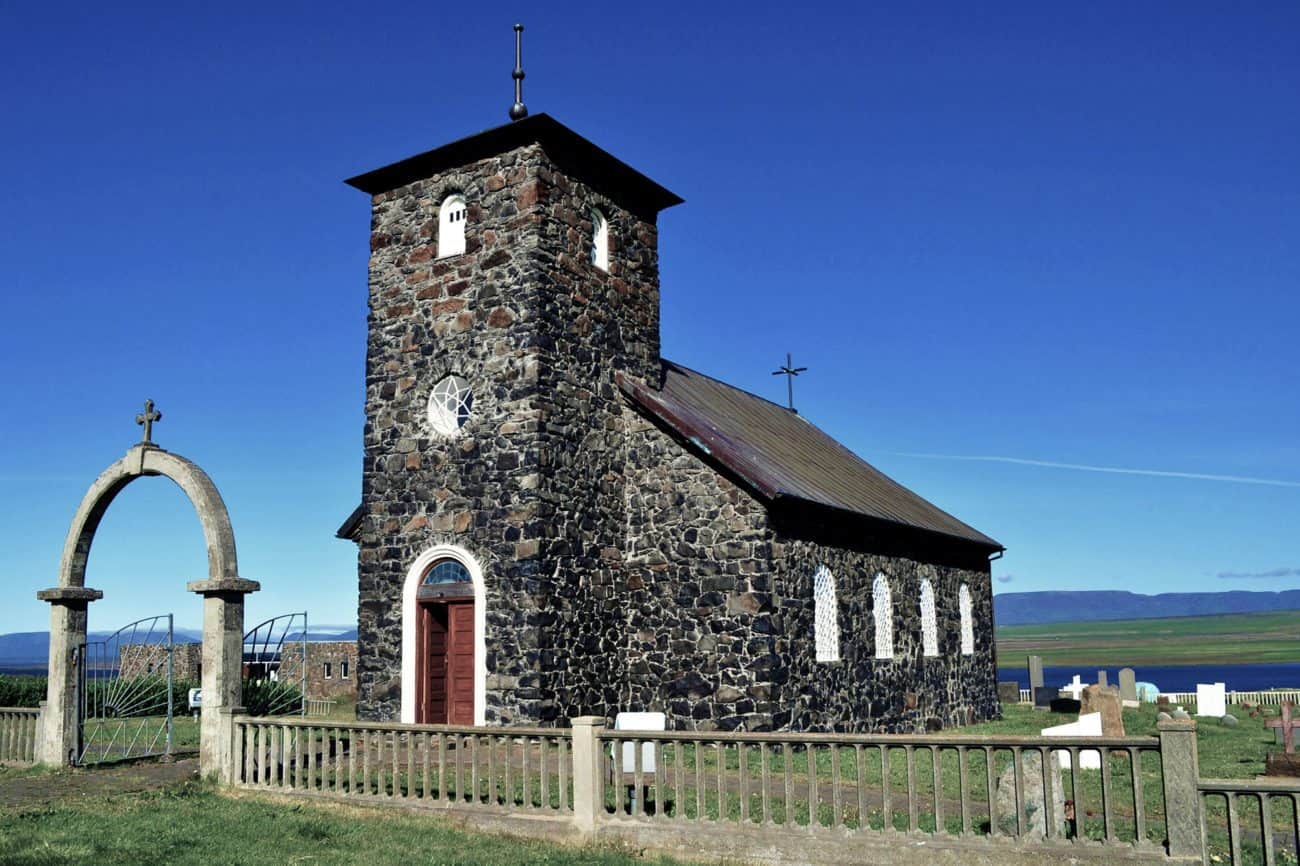
The main character is Ingimundur gamli (e. Ingimundur the old), that settled in Vatnsdalur valley in a farmstead called Hof (e. temple). He came here after a fortune-teller told him to move to Iceland. Ingimundur lived to old age, hence the nickname, and the saga follows the story of him and his family until the arrival of Christianity in the late 10th century.
There are many short narratives in Vatnsdaela saga that are quite interesting and show how people told and retold stories about their ancestors. Also, Vatnsdaela saga has numerous explanations on how places in the Hunafloi area got named.
Notable places in Vatnsdaela
Vatnsdalur valley has many places that play big roles in the narrative and the locals have put up many signs and posters where you can stop and read about in what way the places are linked to the saga. Hof is probably the most noteworthy stop in Vatnsdalur valley. In the recent years there has been an archeological excavation there, which has discovered an old cemetery, dating even from before Christianity, along with ruins of old houses. Interestingly though, the temple is yet to be found.
Stopping by Thingeyrarkirkja is also a must. The church itself is beautiful and can be seen from miles away. A monastery used to be there, which was one of the centers where the sagas were initially written. Also, only a few minutes hike away is where the settlers in this area had their assembly or Þing.
Finally, one of the most enigmatic women in the north at the time of settlement was Þórdís spákona, or Thordis the fortune-teller. She lived at Spákonufell, which is just outside the small village of Skagastrond. There you can find a small museum dedicated to Thordis and her role in the local history. What’s even more interesting, there are still some women there that are fortune tellers, like Thordis. You can have your fortune told in the museum as they did in back in the old days.
Grettis saga
Grettis saga, or the Saga of Grettir the Strong, details the life of Grettir Asmundarson, which was a rather colorful and bellicose outlaw. Grettir was born in late 10th century but idolized Vikings and their lifestyle. He isn’t necessarily evil, though many of his actions are probably not completely thought through and his temper often gets the better of him, making him do things he later regrets.
Grettir spend most of his life as an outlaw, after being blamed for burning down a hall and killing many men. There are times in his life where he acts with courage and like a proper hero. Like the time when he took on the draugur Glámr, which was an undead being, a strong and formidable ghost. Glámr however lays a curse on Grettir, which the author of the saga seems to believe is the reason for most of Grettir’s misfortune. Then there are times where he acts… well, not so heroic and some might even say that some of his actions were not that smart.
Grettir become the longest-surviving outlaw in Icelandis history. Gisli Sursson spent 13 years as an outlaw but Grettir spent 20 years. Grettir was however caught and slain in Drangey island shortly before he was supposed to have his outlawry lifted.
Grettis saga was for ages one of the most popular saga among Icelanders. In recent years, many scholars have pointed out that the saga has many features of a novel, even though Grettir was a real person and probably an outlaw. It is one of the youngest sagas and there are scenes which almost seem satirical of older sagas.
Notable places in Grettis saga
One of the most picturesque places in Skagafjordur fjord is Drangey Island. It is a steep and small island, surrounded by sheer cliffs on all sides. It’s also where Grettir, his brother Illugi and the slave Glaumur lived the last years of Grettir. You can reach the island by boat from Saudarkrokur village and it’s more than worth it, since the boat ride also offers a great view of Skagafjordur fjord, the island and the abundant birdlife there. The house that the brothers lived in is most likely to be found on the south-eastern part of the island, in a place called Haeringshlaup.
As the story goes, Grettir swam one winter night ashore, since they had lost their fire. This was most unfortunate, not only because they needed the heat, but also because Grettir had become afraid of the dark after battling the draugr. Grettir came ashore on Reykjastrond beach. After the swim he bathed in a geothermal pool, to get warm again. You can visit the farm Reykir on Reykjastrond and see where the pool was. Today there is a new pool there in which you can bathe.
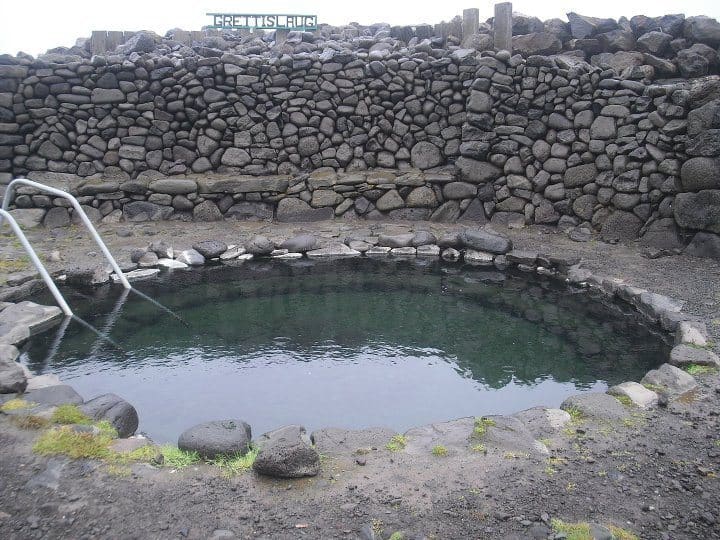
It’s also interesting paying a visit to Bjarg in Midfjordur fjord, which is where Grettir was born. There are many places in the vicinity of the farm that are named after Grettir. His mother, Asdis, lived in Bjarg and there is a memorial stone there, which also has bas-reliefs depicting scenes from Grettis saga.
Finally, the farm Thorhallastadir where Grettir fought the draugr, is now but ruins, but traces of buildings are still in evidence. There’s a small hill there, where the farm once stood and had a great view of the valley. There you can find ruins of the farmstead, west of the river, right across the farm Sunnuhlid.
The East Fjords
There are a few sagas that take place in the East Fjords, though most of them are not among the most popular ones. The East Fjords were, according to archeological evidence, settled early. The area might even have been used as fishing or hunting station, used by Norsemen. In Stodvarfjordur fjord archeologists have found ruins of farmsteads that they propose is a few decades older than oldest ruins found so far in Iceland. Of course, more evidence is needed.
The sagas that take place in the East Fjords are mostly family chronicles and local feuds. The most popular saga from this area is Hrafnkels saga or the Saga of Hrafnkell Freyr’s priest.
Hrafnkels saga
Hrafnkels saga is the story of a chieftain in East Fjords, called Hrafnkell. He starts out as a dedicated worshiper of Freyr, the Norse fertility god, and a fearsome duelist. He also owned a beautiful horse, which he idolized as a symbol of Freyr and hence named the horse Freyfaxi (e. Freyr’s horse).
After suffering defeat, humiliation, his temple ruined and Freyfaxi killed, he became an atheist. Hrafnkell gradually rebuilt his powerbase and achieved total revenge against his enemies. After that he lived the rest of his life as a powerful and respected chieftain.
What makes Hrafnkels saga interesting is how Hrafnkell become an atheist. He renounces the gods after being humiliated and says, “I think it is foolish to put your faith in the gods”. Hrafnkell announced that he would never make any sacrifices to the gods. He also declared that he refused to take any part in religious acts again.
Also, in almost all the sagas you will find poetry, either by some of the characters or cited by the writers to reinforce the notion that these are stories based on facts. Usually these are drottkvaedi (e. courtly metre). Some of the poems are even for Icelanders hard to understand today, due to old poetic vocabulary, alliteration and the use of kennings. The absence of poems in Hrafnkels saga is, if you’ve read a few sagas, noteworthy.
Notable places in Hrafnkels saga
In Hrafnkelsdalur valley you will find the farm Adalbol, where Hrafnkell used to live. There you can embark on a short hike, called the Saga trail. Following it you will visit and see some the places in Hrafnkelsdalur mentioned in the saga. Not far from Adalbol is Freyfaxahamar cliff, where Hrafnkell’s enemies slaughtered Freyfaxi.
Short distance from Egilsstadir is Hrafnkelsstadir farm. There Hrafnkell lived the few years after he was forced to leave Adalbol and before he could enact his revenge upon his enemies. Before he bought the land, it was considered not worth much, since woods grew there. Hrafnkell felled the trees and built a farm there. One of his sons lived there after Hrafnkell reclaimed Adalbol.
The South
South Iceland is perhaps the most popular area for tourists, after all there you will find the Golden Circle, stunning black sand beaches, glaciers and volcanoes alike not to mention all the stunning waterfalls and incredible vistas where flat land meets soaring ice capped peaks.
Strangely enough there however only a handful of sagas that actually take place in the South. Of course, many sagas have a scene or two at Thingvellir, during Althing, but only a few of them are centered around events that take place in the South. And one of these is probably the most popular saga of all time, Brennu-Njals saga.
Brennu-Njals saga
It’s no wonder that Brennu-Njals saga (e. the Saga of Burnt Njall) is the most popular saga and has been for years. It has a massive scope, incredible and colorful character gallery, long-standing feuds and often devious political plays. It has survived in around 60 manuscripts. That fact further shows just how popular this saga is and has been through the centuries. From an Icelandic literature stand-point, this is a big one!
The main characters are the friends Njall Thorgeirsson, a lawyer and a saga, and Gunnar Hamundsson, a powerful warrior though probably not the smartest tool in the shed. Gunnar marries a hot-tempered woman, Hallgerdur. She instigates a feud that leads to the death of many characters of several decades, including Gunnar himself and the killing by fire of the eponymous “Burnt Njall”.
The saga follows the process of many blood feuds in the time of the settlement and the following decades. It depicts how the requirements of honor lead to destructive behavior and prolonged bloodshed.
What makes this saga interesting is how the anonymous author is critical of an overly restrictive ideal of masculinity. The men of the saga are constantly in need to answer any slight insults, due to their inflated sense of honor. Often these insults spiraled into brutal and deadly fights.
Also, the presence of omens and prophetic dreams is very interesting. This is something many authors of the sagas used every now and then, but the author Brennu-Njals saga takes this all the way, so to speak. You, the reader, are constantly reminded of how this or that event will turn out, through the foreshadowing narrative, making the saga even more suspenseful.
Notable places in Brennu-Njals saga
Since this is a very long saga, with many different characters that play huge parts in the narrative, it is hard to single out a few places. There are, however, a few that, if you are interested in the saga, are interesting to see and visit.
Thingvellir National Park play a huge role in the saga. It is the place where Gunnar and Hallgerdur first meet, it is where Njall, as a lawyer, often took part in the Althing assembly, very often arguing cases for his friend Gunnar. Thingvellir, of course, also play a huge role in many other sagas. Walking through Almannagja fissure and to the Logberg cliff, will help you see in your mind’s eye how events fold out in the sagas.
At Hella village is a nice museum dedicated to Brennu-Njals saga. There you can get a guided tour and more information about the saga and the time of the settlement. Just outside Hella is Hlidarendi farm, where Gunnar lived, and Bergthorshvoll farm, where Njall and his family lived. Towering over the landscape is mt. Thrihyrningur, a many peaked tuff strata mountain, the highest peak being 675 meters above sea level, which is often mentioned in the saga.
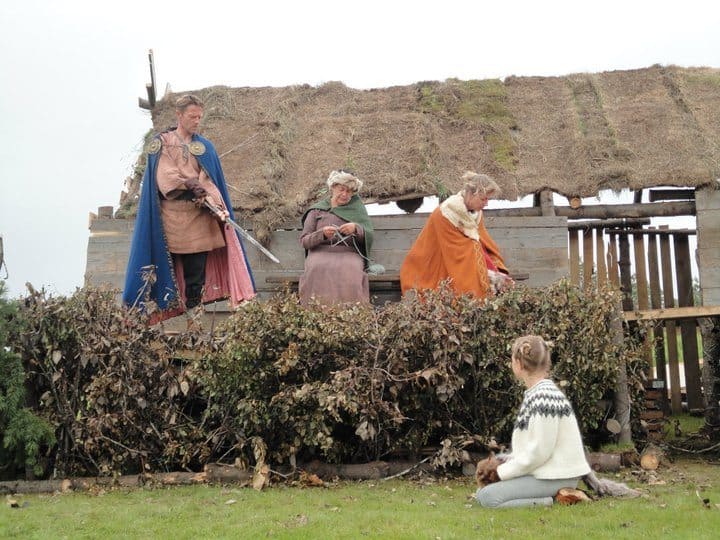
Driving along the South Coast will bring you close to many prominent places featured in Brennu-Njals saga, e.g. Svinafell farm, Keldur farm, mt. Lomagnupur and Markarfljot river. There are in some of these places posters and information signs, where you can read up on how these places are linked to the saga.
Reykjavik area and Reykjanes
Strange as it may seem, according to what we know now about settlement in Reykjavik, Reykjavik doesn’t play a huge role in the sagas. In fact, only one saga takes place in this area, Kjalnesinga saga or Saga of the People of Kjalarnes. It is a short saga and tells the story of Bui, which is an outlaw. The saga is one of the youngest sagas, written around 1300 AC, and is a bit more on the fantasy side, than many other sagas.
However, you can pay a visit to Safnahus museum in Hverfisgata and see the old manuscripts and libri, that contain the sagas. Many of the manuscripts are beautiful, they include decorative artwork and illustrations. If you are the literary type, I highly recommend that you pay Safnahus museum a visit.